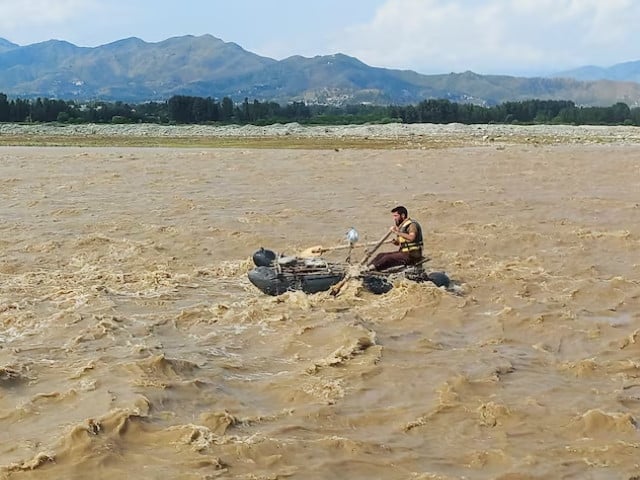PESHAWAR:
An inquiry report by the Malakand commissioner into the tragic incident in Swat River has been submitted to the Provincial Inspection Team on Thursday. The report sheds light on the circumstances surrounding the event that claimed multiple lives.
Last week, flash floods triggered by a sudden surge in the Swat River and other streams in the district following heavy monsoon rains claimed the lives of at least 12 people.
The Provincial Disaster Management Authority (PDMA) described the flood level as “very high,” while officials said dozens of people were trapped as authorities scrambled to deal with the aftermath of two days of relentless downpours.
According to the investigation, construction work along the river had diverted the water flow, resulting in lower water levels at the accident site. This reduction in the water level led the tourists to enter the river, unaware of the potential dangers.
The report revealed that heavy rainfall caused the water level in Swat River to rise to 77,782 cusecs. The preliminary findings indicate that 17 tourists were trapped in the flood, with 10 hailing from Sialkot, six from Mardan, and one local resident.
Read More: Sudden water surge caused Swat tragedy
The affected tourists arrived at a local hotel at 8:31 am and entered the river an hour later at 9:31 am. The hotel’s security guard attempted to stop them, but the group bypassed the hotel’s front entrance and entered from the back. Just 14 minutes later, at 9:45 am, rising water levels prompted a rescue call.
Authorities reached the site at 10:05 am, 20 minutes after the distress call. All relevant departments had been alerted about the risk of flooding, with several weather warnings issued by concerned agencies.
Emergency personnel had been pre-designated for action in case of an emergency. Prior to the flood, a decision had already been made to address encroachments along the riverbank. On June 2, Section 144 was imposed in the Malakand Division for one month.
The report noted that on June 24, Section 144 was extended to prohibit swimming and boating in Swat River. Of the 17 trapped tourists, four were rescued, 12 bodies were recovered, and search efforts for one person are still ongoing.
Also Read: DC Swat removed, four officials suspended
The report further revealed that 75 people were swept away in various parts of Swat. As a result, several key officials, including the DC, ADC, and AC of Babuzai and Khwazakhela, were suspended. The district emergency officer and tehsil municipal officer of Swat were also relieved of their duties.
In the aftermath of the tragedy, on June 28, the Khyber-Pakhtunkhwa chief secretary visited the site and imposed a complete ban on all mining activities.
Meanwhile, a report by the K-P irrigation department revealed earlier that the flow of the Khwazakhela River surged dramatically by 71,044 cusecs — from 6,738 to 77,782 cusecs — within a few hours on June 27. The sudden rise left a family stranded on the riverbed with no opportunity to return to safety.
According to the report, the irrigation department issued an early warning at 8:41 am, alerting all relevant departments. Deputy commissioners of Swat, Charsadda, and Nowshera were informed in advance, and regular updates were shared via WhatsApp. A formal flood alert was issued at 10:30 am.
The department claimed it repeatedly sent alerts to Swat DC, PDMA, ADC Relief, and other relevant officials. The tourists reportedly entered the middle of the Khwazakhela River when the water level was stable, but became trapped as it began to rise. They waited for the water to recede, but the level continued to increase rapidly.
The report recommended equipping Rescue 1122 with flood rescue tools and urged hotel owners to restrict tourist movement to safe areas. It also called on the local administration to develop a comprehensive plan to manage tourist movement and suggested the installation of telemetry gauges in Madian and Kalam for better flood monitoring.
